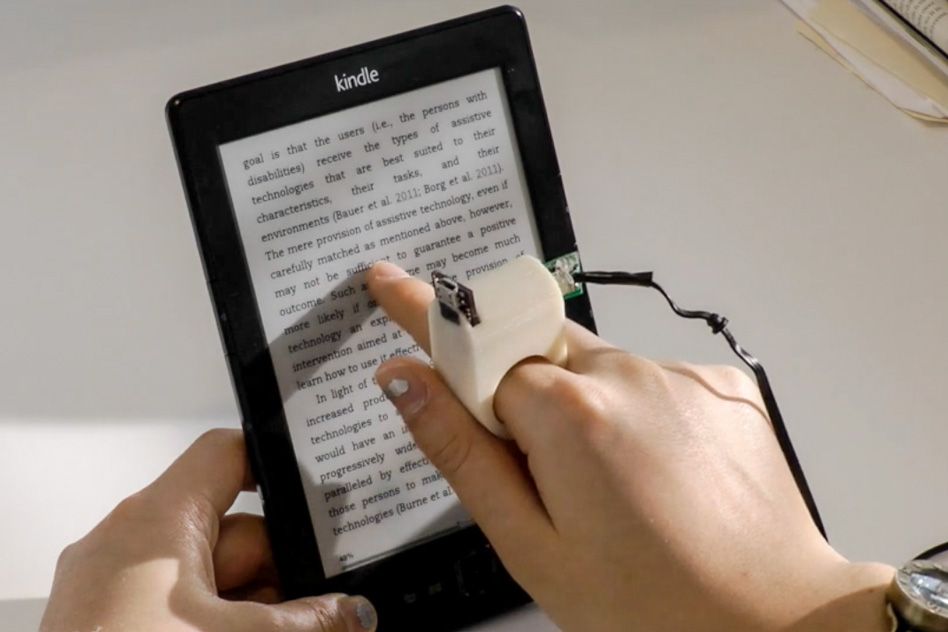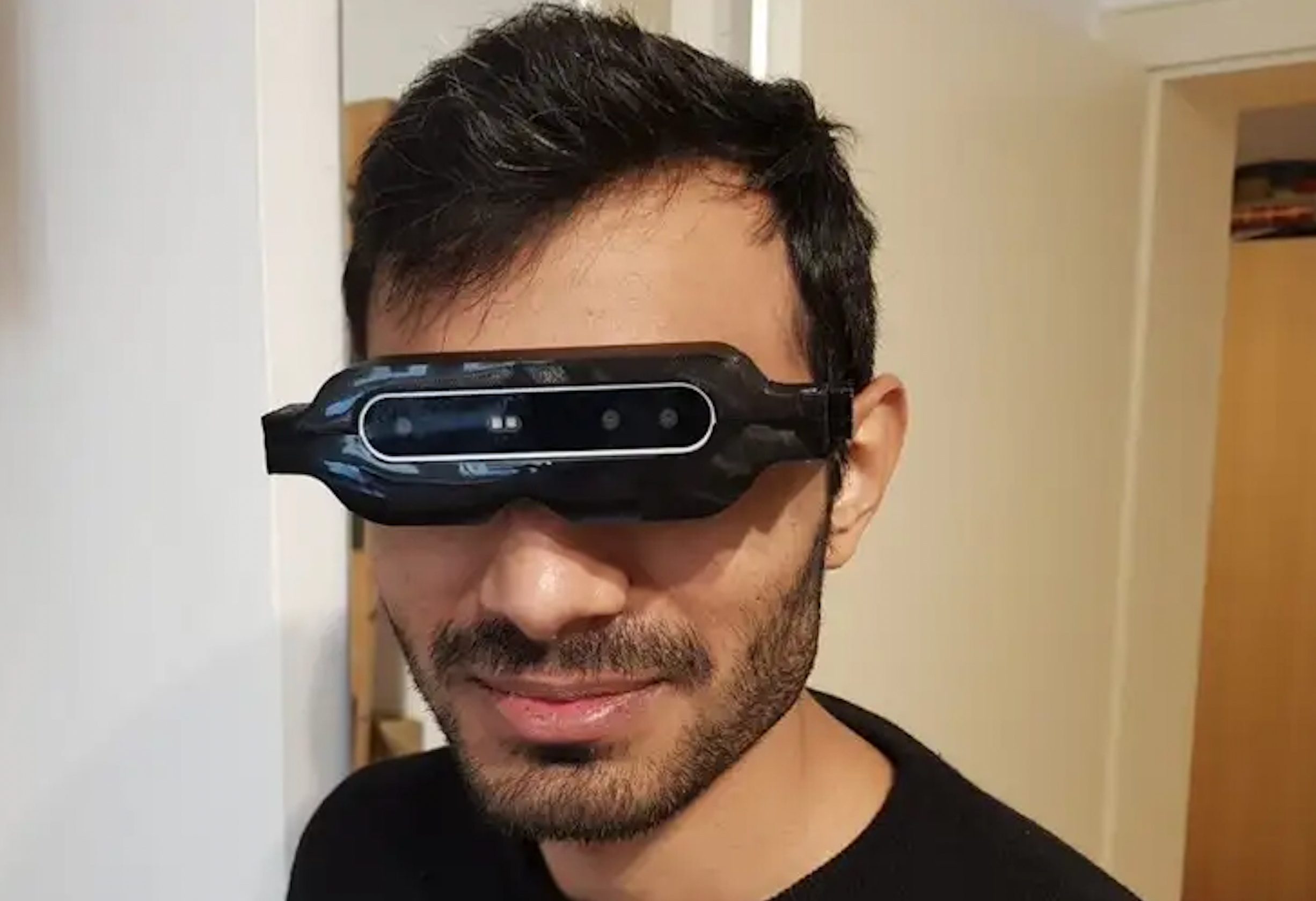Enhancing Lives With Advanced Assistive Devices for the Blind
The integration of sophisticated assistive devices for the blind is changing how people experience their surroundings and communicate with their areas. What does this development mean for the future of assistive technology and its function in empowering individuals?
Introduction of Assistive Devices
Assistive devices for the blind include a diverse variety of innovations and tools developed to improve independence and boost the high quality of life for people with visual disabilities. These tools satisfy different needs, from navigating and movement to communication and day-to-day job monitoring.
Among the key categories of assistive tools includes movement help, such as white walking canes and guide canines, which aid customers navigate their surroundings securely. Digital traveling help, geared up with sensing units and audio responses, additionally play a considerable function in mobility enhancement.
Additionally, gadgets that aid with daily living activities, such as adaptive kitchen tools, Braille tags, and speaking watches, encourage people to carry out jobs individually. Communication aids, consisting of display viewers and Braille display screens, help with access to info and allow people to engage effectively with the electronic globe.
In addition, low-tech services like amplifying glasses and large-print materials stay essential for numerous users. Collectively, these assistive gadgets serve not only as functional devices however likewise as essential enablers of autonomy, fostering better engagement in a world that usually focuses on sighted experiences. Their assimilation right into life is vital for promoting inclusivity and enhancing general wellness for those with visual disabilities.
Ingenious Technologies being used
Advancement in innovation has substantially transformed the landscape of tools available for individuals with visual disabilities. Among one of the most significant advancements are wise glasses incorporated with enhanced reality, which provide real-time navigating support and object recognition. These tools leverage progressed electronic cameras and expert system to deliver auditory signs, enhancing the customer's spatial understanding and freedom.
Furthermore, mobile applications have become powerful sources, making it possible for users to identify money, reviewed message aloud, and browse unfamiliar settings through spoken directions. Tools such as Braille displays and refreshable Braille devices remain to evolve, supplying smooth connection with smart devices and computers, thereby boosting communication and accessibility to details.
Wearable innovation, including smartwatches geared up with voice-activated attributes, further encourages users by facilitating quick accessibility to notices and alerts without calling for visual engagement. Tactile maps and 3D printing are also getting traction, providing substantial representations of spaces that help in orientation and flexibility training.
Collectively, these ingenious technologies not just improve the everyday lives of aesthetically impaired people but additionally foster greater independence, inclusivity, and interaction with the broader community, therefore reshaping assumptions of availability. (Smart glasses for the visually impaired)
Individual Stories of Empowerment
Empowerment typically emerges from personal experiences that highlight the transformative impact of innovation on people with aesthetic disabilities. Take, for circumstances, the tale of Sarah, a young musician who restored her enthusiasm for paint via using a clever cane geared up with challenge detection. This tool not just promoted her wheelchair yet instilled a newly found confidence, allowing her to browse public rooms individually and seek her creative endeavors.

These narratives underscore the profound results that advanced assistive tools can carry every day special info life. By enabling people to get over barriers, modern technology fosters a feeling of freedom and self-worth. Such empowerment stories function as a testimony to the potential of innovation, showing exactly how the right devices can considerably enhance high quality of life and open doors to new possibilities for those with visual disabilities.
Benefits of Advanced Solutions
How can progressed services fundamentally improve the lives of individuals with visual problems? The combination of sophisticated innovation right into assistive tools considerably transforms day-to-day experiences for those impacted by vision loss. These sophisticated remedies use extraordinary freedom, enabling users to browse their environments with confidence. Devices such as wise canes geared up with sensing units, navigation applications, and wearable technology are created to provide real-time responses, improving spatial understanding and lowering the dangers connected with mobility.
Additionally, progressed assistive technologies cultivate social addition by facilitating communication and communication. Voice-activated tools and applications permit individuals to access info and engage glasses frames for women with their surroundings independently, breaking obstacles that previously hindered their engagement in instructional, expert, and social setups.
In addition, the personalization and flexibility of these solutions deal with the varied needs of individuals, thereby enhancing their total quality of life. Improved capability, such as object recognition and text-to-speech capacities, empowers people with visual problems to carry out tasks that they might have as soon as discovered challenging. Eventually, advanced assistive technologies not just improve freedom and safety but also advertise self-respect and self-regard, allowing customers to lead fulfilling lives.
Future Fads in Assistive Tech
As innovation remains to develop, the landscape of assistive tools for the blind is poised for remarkable innovations that will certainly further improve availability and self-reliance. Emerging trends in assistive modern technology show a change toward boosted integration of artificial knowledge (AI) and artificial intelligence, enabling gadgets to adjust to private user needs in real-time. These technologies are expected to facilitate even more user-friendly navigating systems that can determine barriers and provide audio responses, substantially improving outside mobility.
Additionally, the advancement of wearable technology, such as wise glasses outfitted with enhanced fact, will certainly enable users to receive contextual info about their environments, therefore enhancing their spatial recognition. In addition, innovations in haptic technology pledge to develop responsive feedback gadgets, allowing users to view info with touch, improving knowing and interaction with their environment.
Telecommunication advancements are likewise leading the means for remote aid options, where experienced experts can supply support using video clip calls, making certain support is easily accessible. As these patterns unfold, the future of assistive devices for the blind will most certainly cultivate higher autonomy, encouraging people to navigate their world with self-confidence and convenience.

Verdict
The integration of advanced assistive gadgets for the blind stands for a considerable improvement in cultivating freedom and enhancing quality of life. By making use of cutting-edge innovations, these gadgets encourage customers to browse their settings with better confidence and autonomy. As the field continues to progress, continuous r & d will likely produce even extra sophisticated services, additionally changing the lived experiences of people with visual impairments and promoting a higher eyewear near me feeling of inclusion within culture.
The integration of advanced assistive gadgets for the blind is changing exactly how people experience their environments and engage with their neighborhoods. The integration of advanced innovation right into assistive gadgets significantly changes daily experiences for those influenced by vision loss.As technology continues to evolve, the landscape of assistive gadgets for the blind is poised for amazing developments that will better boost availability and self-reliance. Arising patterns in assistive innovation suggest a shift towards enhanced integration of synthetic intelligence (AI) and device knowing, enabling tools to adjust to private customer requires in real-time.The combination of advanced assistive tools for the blind represents a substantial development in fostering freedom and enhancing top quality of life.